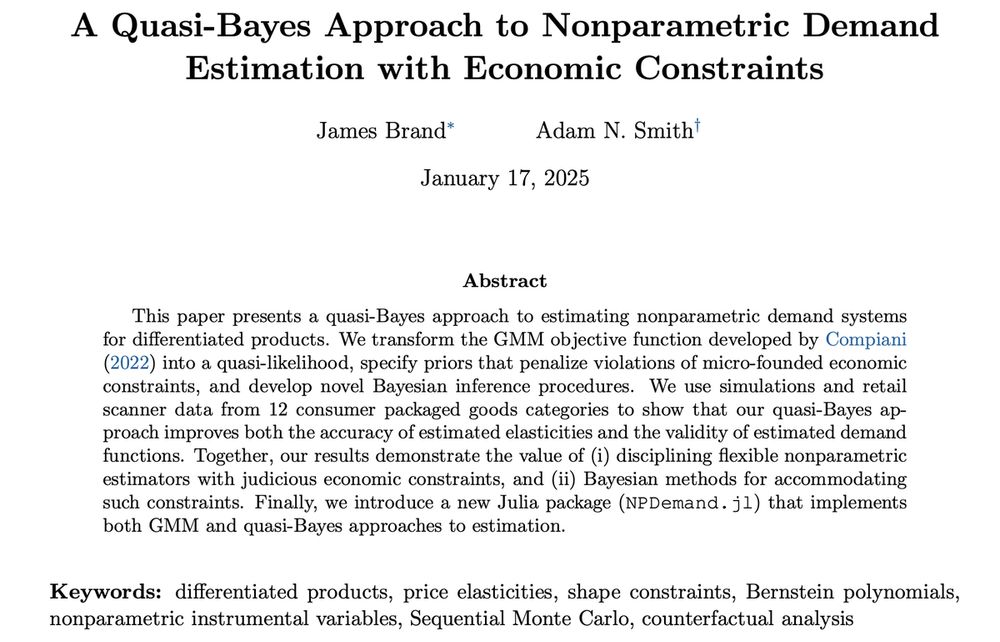Jimbo Brand
@jamesbrandecon.bsky.social
750 followers
230 following
35 posts
Economist at Microsoft, PhD from UT Austin. Views are my own
Posts
Media
Videos
Starter Packs
Pinned
Jimbo Brand
@jamesbrandecon.bsky.social
· Jan 20
Jimbo Brand
@jamesbrandecon.bsky.social
· Jan 19
Jimbo Brand
@jamesbrandecon.bsky.social
· Jan 18
Jimbo Brand
@jamesbrandecon.bsky.social
· Jan 17
Jimbo Brand
@jamesbrandecon.bsky.social
· Dec 11
Jimbo Brand
@jamesbrandecon.bsky.social
· Nov 27
Jimbo Brand
@jamesbrandecon.bsky.social
· Nov 26
Jimbo Brand
@jamesbrandecon.bsky.social
· Nov 26
Jimbo Brand
@jamesbrandecon.bsky.social
· Nov 26
Jimbo Brand
@jamesbrandecon.bsky.social
· Nov 23
Jimbo Brand
@jamesbrandecon.bsky.social
· Nov 23
Jimbo Brand
@jamesbrandecon.bsky.social
· Oct 23







